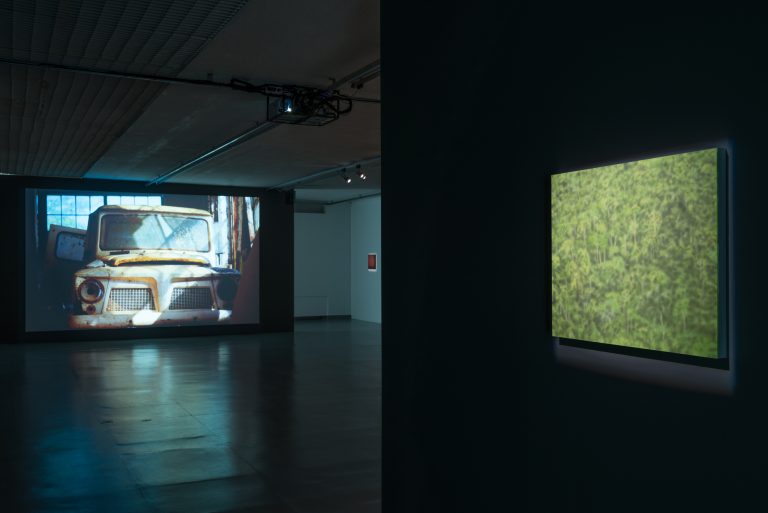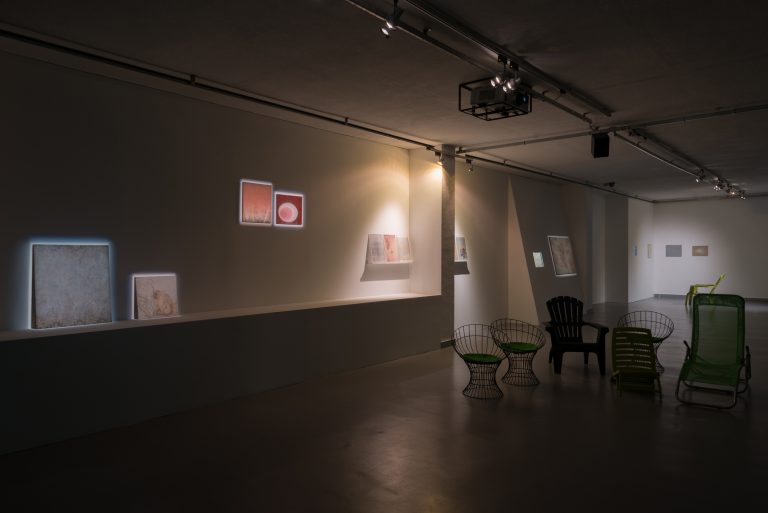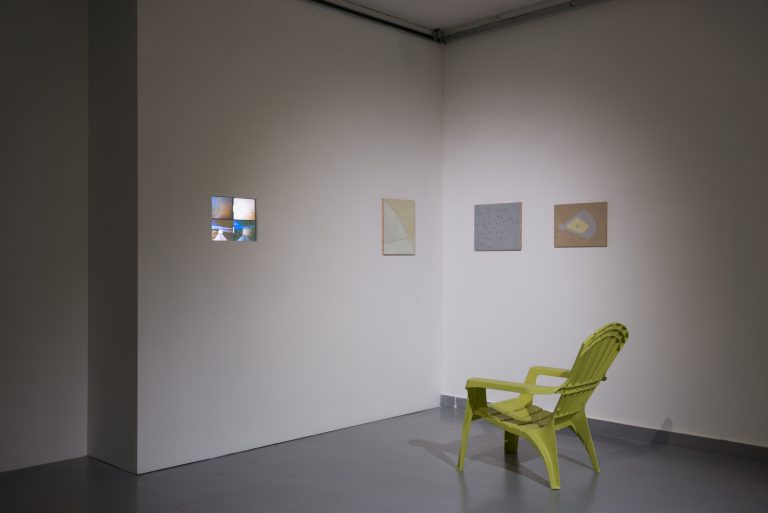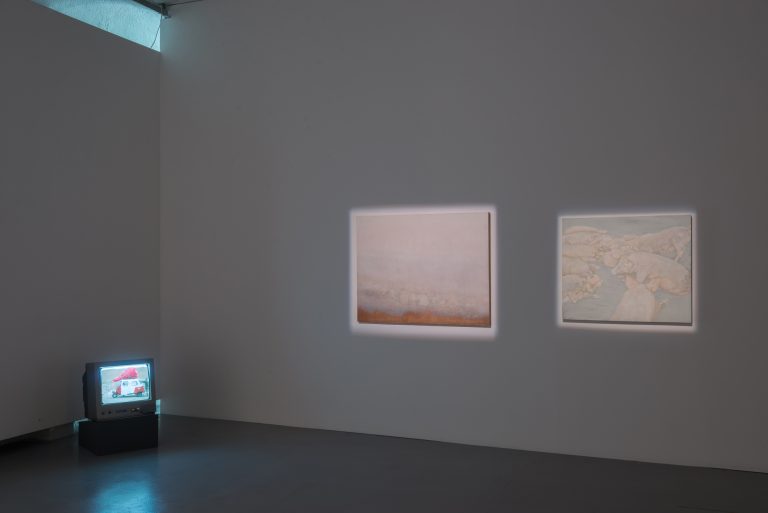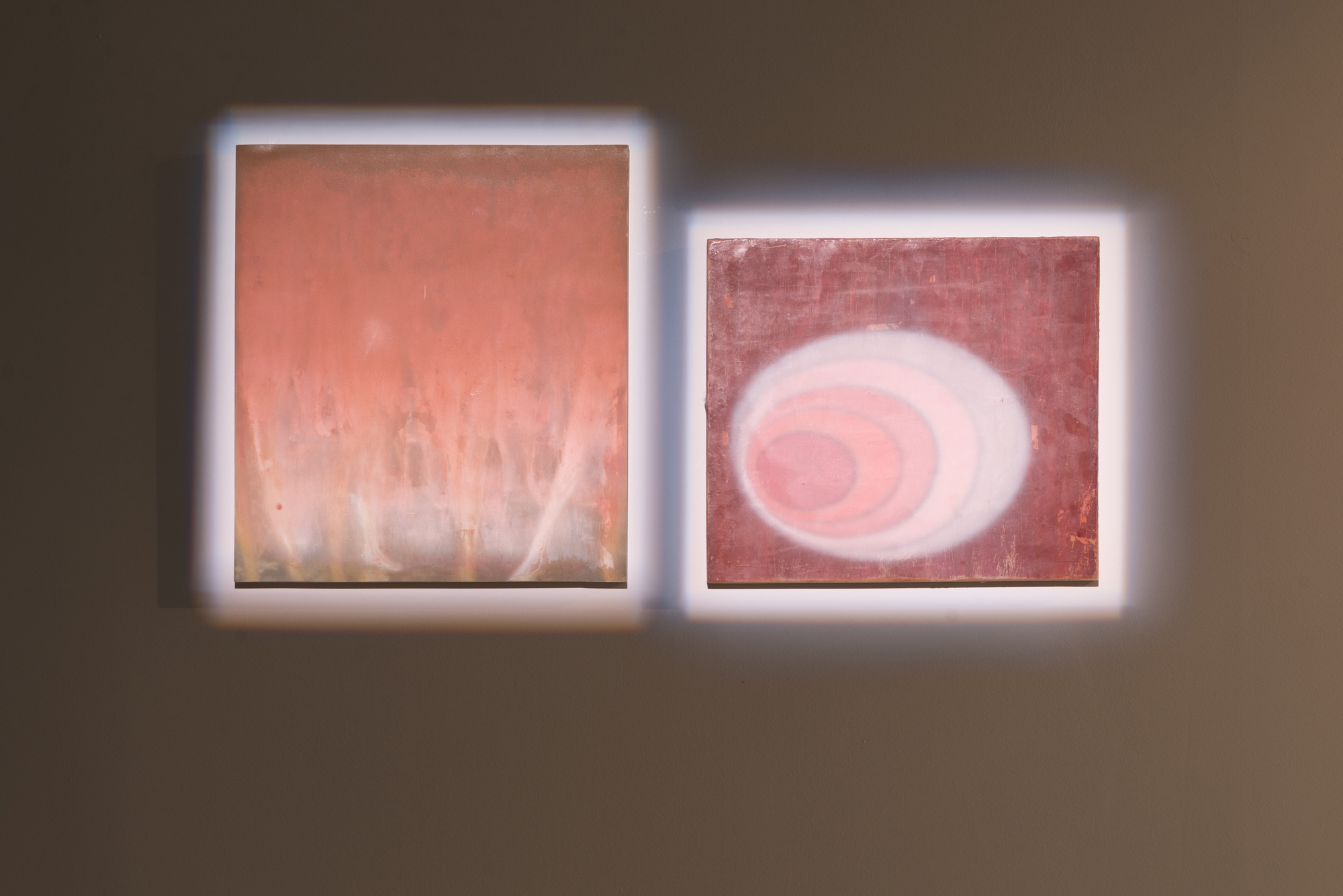
Melanie Smith’s solo exhibition “Crocodiles and Elevators” presents films and paintings – media that the artist often employs in parallel, and that are coupled by the format of rectangle or frame. In the work of Smith, rectangle and grid allude to a continuous interest of hers – a certain expanded vision of the notion of modernity, which the artist has deconstructed on frequent occasions. In Smith’s practise, this relationship with modernity encompasses a vast field of interrelations; both its discordant manifestations in contemporary Latin America – especially Mexico – and the forms of the avant-garde and post avant-garde movements that embodied aesthetical and political categories of modernity.
The work of Melanie Smith often derives from historical or contemporary heterotopias as well as from gestures of quotidian urban life, and frequently refers to the imagery of the modernist canon; monochrome painting of Kazimir Malevich or Robert Smithson’s displacement works, for example. However, by employing formalist deconstruction and surrealist tactics of absurd and off-key montage, the forms and ideological structures of modernity are distorted, expanded and transformed. That which is perceived as anachronistic, unstable and chaotic – the so called failed and incomplete Latin American modernity – in Smith’s work becomes an opening for a possibility. A glimpse at what happens between the frames and around the surface reveals a certain off-frame in form and content; shifting and migrating meanings and uncertainty of recognition.
The exhibition also features Fordlandia, the latest film by Melanie Smith, shot in the Brazilian Amazon, where in the 1930s the automobile manufacturing magnate, Henry Ford, constructed an industrial settlement with an aspiration to extract rubber on mass scale. The project soon collapsed and remote settlement in the tropics was abandoned. Smith, who in her earlier works often explored the multitudes of the urban Mexico City living and the imagery produced by its tensions, approaches this industrial project as if through the lens of nature as chaos and entropy. As with other long-term projects by the artist, Fordlandia does not document but attempts to sense; to detect the pulse and observe the intensity of this physical but also imaginary space, to find the possible apertures of relating to it today. This film, perhaps more radically than earlier works by Smith, removes the split between form and content, representation and abstraction. What appears in place of this collapse and indeterminacy is a field of temporary intensity open to inscription. And here, in the background of erosion and residue of buildings and machines, an animal draws closer.
Melanie Smith (born in Poole, UK, 1965) has lived and worked in Mexico City since 1989. Trained as a painter she also works in photography, installation, film and video. In 2011 Smith represented Mexico at its national pavilion at the 54th Venice Biennale. Her work has been exhibited at numerous international institutions, including: PS1, New York; MoMA, New York; UCLA Hammer Museum, Los Angeles; Tate Liverpool; Tate Modern, London; South London Gallery, London; Museo de Arte de Lima; Museo Tamayo, Museo Universitario Arte Contemporáneo and Museo Experimental El Eco, Mexico City; Museo de Monterrey.
OPENING EVENT
Friday, 12 September, 7 pm: A talk by critic and philosopher José Luis Barrios, “Melanie Smith: Aesthetics of affect on the edges of modernity. À propos of Fordlandia“. The talk will be held in Spanish with a synchronous translation to Lithuanian.
This talk is a revision of the work of the English artist Melanie Smith, living and developing projects in Mexico for over twenty years. Melanie Smith’s work is emblematic of the art coming out of Mexico in the nineties, particularly Mexico City. Her production can be defined as an aesthetic investigation centred around the forms and derivatives that modernity and political, cultural and artistic contemporaneity have taken in Mexico and Latin America in the era of globalisation. The place that Mexican contemporary art has in the world is widely related to the way in which social and geopolitical imaginaries of this country have been read by artistic production today. This imaginary in Melanie Smith’s case concerns the way in which chaos and the precariousness of life define aesthetic potentials beyond the forms of representation that globalisation has created in the figures of the other and the different.
José Luis Barrios is a philosopher and art historian. He is a professor in the Department of Philosophy at the Universidad Iberoamericana. He is the organizer of the Politics of representation seminar in the graduate program in Art History in the Department of Philosophy and Literature at UNAM. In 2012 he was a visiting professor at University of California – Berkeley and Hunter College, New York. His general area of research is on the relationship between aesthetics and politics. He works on the relationships between precarious life and logics of exlusion. He is the author of numerous books and articles and essays in magazines that specialize in aesthetics, art theory, contemporary art, film, and political philosophy. His most recent curatorial projects are Melanie Smith: Red Square, Impossible Pink for the Mexican Pavilion at the 2011 Venice Biennale, and Los sueños de una nación un año después, 2011, at the Museo Nacional de Arte in Mexico City.
Image: Film still from Melanie Smith Fordlandia, 2014 (image credit: Julien Devaux), courtesy the artist and Galerie Peter Kilchmann, Zurich.








